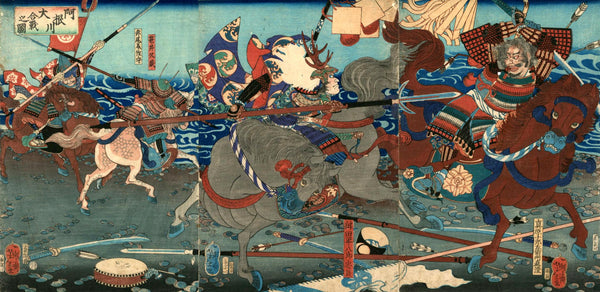Were Katanas Used in Battle? Common Questions and Answers
Were Katanas Used in Battle? Common Questions and Answers
Japanese swords, particularly the katana, evoke images of samurai charging into battle, their gleaming blades reflecting honor and valor. However, the reality of historical warfare and weapon preference is often more nuanced than popular portrayals, katanas were used in battle, but they are not the primary weapon. Let's delve into the truth behind the use of the katana in battle.
Table of Content
- Introducing the Katana Family
- The Uchigatana's Role in Battle
- The Uchigatana's True Purpose
- The final glory of katana
- Conclusion: Beyond the Blade's Aesthetic
1. Introducing the Katana Family

First, it's crucial to understand that the term "katana" doesn’t singularly refer to one type of sword. Instead, it's an umbrella term for various Japanese swords. The blade commonly associated with the term katana is actually the uchigatana. This broad family also consists of other members like the tachi, wakizashi, tanto, naginata, and nagamaki. Each sword was designed with a particular function and utility in mind.
2. The Uchigatana's Role in Battle

It might be surprising to many, but when addressing the question of whether the uchigatana was frequently used in battle, the answer leans towards the negative. Historical records, particularly from the warring period in Japan, paint a clear picture. Translating from provided statistics:
"According to data from the Warring States period in Japan, the majority of damage on the battlefield was caused by arrows, accounting for 38.6% of all injuries. Following this was damage caused by firearms, at 22.2%. Close combat weapons like the long spear or yari accounted for 20.8%. Intriguingly, after the yari, the next weapon causing the most injuries wasn't the Japanese sword, but rather stones, accounting for 11.3% of total injuries. Damage caused by the Japanese sword, or uchigatana, was a mere 4.5%. It's worth noting that these statistics predominantly concern foot soldiers, whose armor was considerably superior to the average infantry."

3. The Uchigatana's True Purpose

As seen from the statistics, the uchigatana wasn’t a primary weapon for large scale battles. Instead of being a soldier’s primary weapon, it was more of a last-resort defense. Its design and function made it suitable for martial arts, personal duels, and self-defense. In many cases, the uchigatana was a symbol of a samurai's honor and was more utilized in ceremonies, rituals, and martial arts training than on the battlefield.
4. The final glory of katana
After the The Sword Abolishment Edict (廃刀令) issued, only former lords, military, and law enforcement officials can carry and use Katana in public. This law heavily impacted the samurai class, as the new government no longer feel the need of samurai in sociality, their privileges were taken away, together with their katana.
This edict fueled anger among the samurai, final led to the Satsuma Rebellion or Southwest War (Seinan War). In the hand-to-hand combat, the government forces, mainly newly trained soilders using guns, struggled against the Saigo Army, who are experienced samurai using katana. Even after the government won the war, they realized the importance of katana, and katana skill in battlefield, so they still deploy katana in army and police.
5. Conclusion: Beyond the Blade's Aesthetic

The katana, especially the uchigatana, is an elegant piece of craftsmanship, reflecting centuries of Japanese tradition, culture, and martial expertise. However, one should not be swayed by its beauty and modern-day depictions alone. While it holds significant cultural and symbolic importance, it wasn't the primary weapon of choice in large scale battles. Recognizing this distinction allows one to appreciate the blade beyond its aesthetic, understanding its unique place within the broader context of Japanese martial history.





















